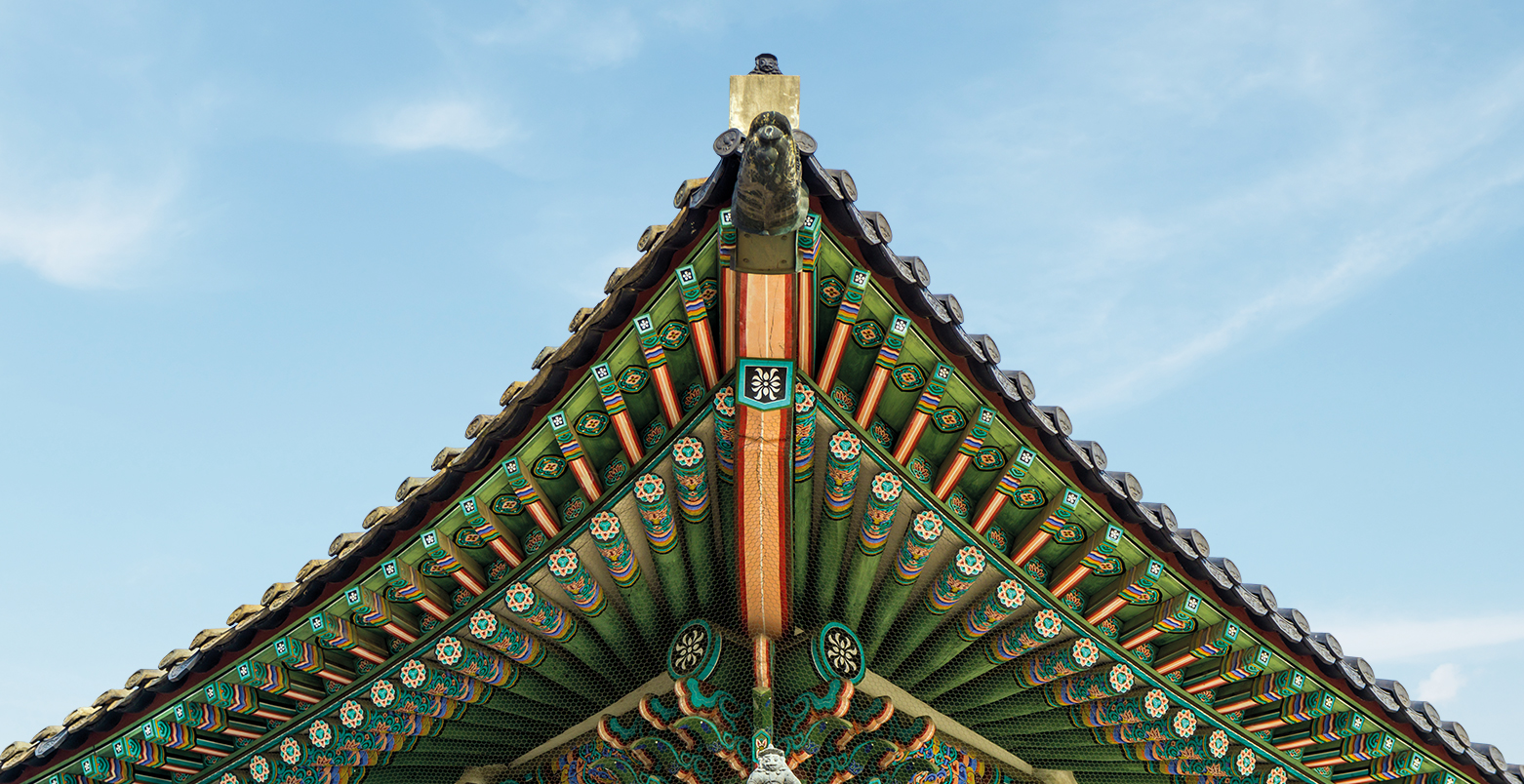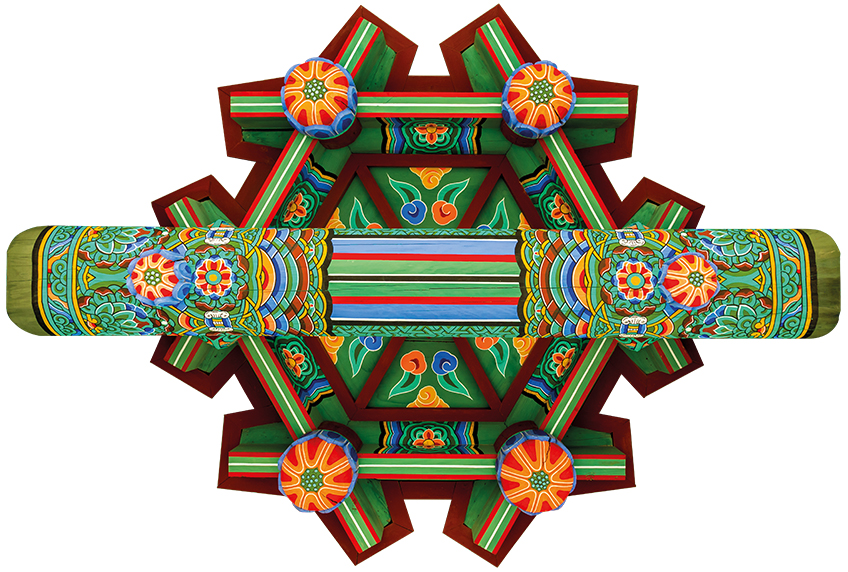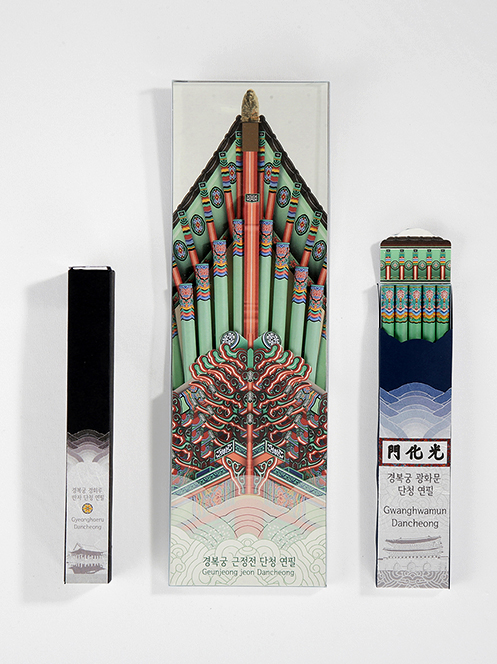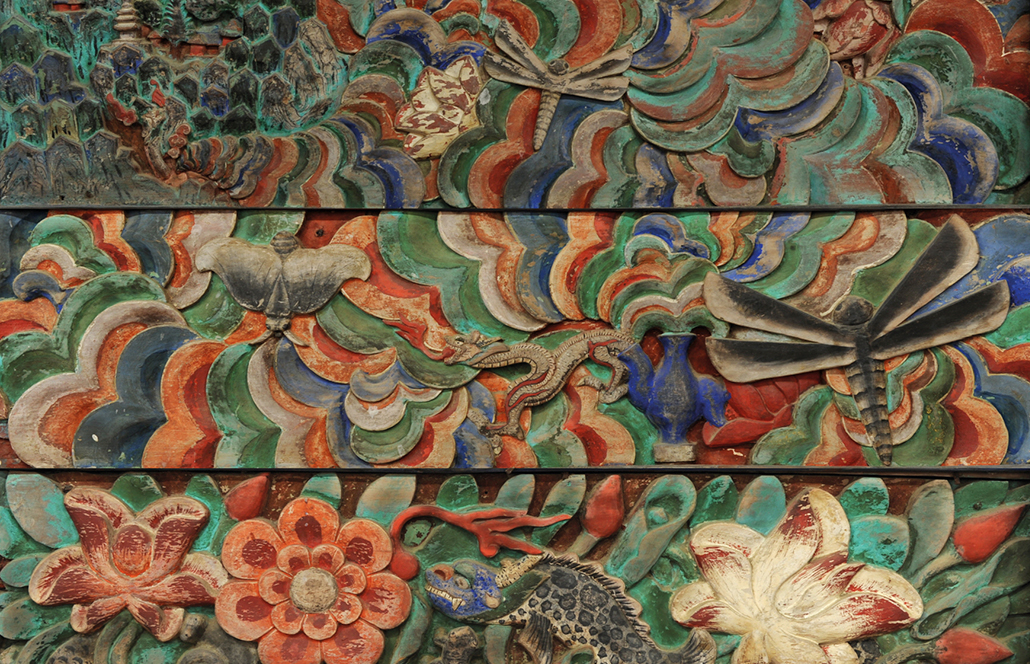
Contents










Design · Written by Lee Eun-yi, designer
Dancheong
Embracing Nature
Serving as the heart of Buddhism in Korea, mountain temples display the highest form of traditional
Korean architecture and arts. Seven temples were listed as UNESCO World Heritage Sites last year,
attesting to the recognition of their high value not only in Korea but also worldwide. Despite vividly
displaying the colors red and blue, such temples harmoniously blend into their surroundings, and this
harmonious combination of nature and temple design is the essence of dancheong.

Dancheong refers to traditional coloring on wooden buildings and artifacts in Korea for decoration and style, a style that can be seen on ancient murals from the Goguryeo Kingdom era (37 B.C.E-668 C.E.); it was also recorded in the ancient book “Samguk Yusa (Memorabilia of The Three Kingdoms).” Thus the origin of dancheong design can be traced back to the period of the Three Kingdoms of Korea (57 B.C.E to 668 C.E.). For centuries, this art has been used in architecture, painting, sculpture and assorted crafts. Its usual function was to cover design defects and prevent cracks in wooden buildings, in addition to repelling pests and protecting from rain and wind. Sacred places like temples or palaces adopted a variety of dancheong patterns and radiant colors to accentuate their designs.
Unlike China, which used red, and Japan, which used grey and black, Korea utilized blue, red, yellow, white and black, the five cardinal colors that represent wood, fire, earth, metal and water, respectively, based on yin and yang and the Five Elements Theory. As Daniel Tribouillard, CEO of the French fashion brand Leonard, said, “The bold combination of vivid pink, blue green, yellow and purple is something I’ve never seen in any other part of the world.” Thus the colors used in dancheong is unparalleled. In addition, dark red pillars, green leaves, white and black stripes, and repetitive red and blue geometric shapes combine and contrast principles of nature and art.

Conformity with Their Environment
Every building has its own style of dancheong based on region, time of construction and specific function. What remains constant, however, is the method of production: polishing with glue and soil, applying holepunched paper with needles along the patterns, hammering the white sections, sketching the marks, and coloring and finishing by drawing an outer line with ink. Since dancheong is based on yin and yang and the Five Elements Theory, blue is placed to the east, red south, yellow center, white west and black north. The placement of flora and fauna like birds, dragons, tigers and black tortoises also follows the theory’s principles. Patterns also include the lotus representing Buddhism, pomegranate for wealth and honor, peony for fertility and chrysanthemum for long life, all of which represent wishes for wellbeing in both this life and the next.
Buddhist temples and palaces decorated with dancheong stand unchallenged in their aesthetic appeal even with ever-changing design trends. Their outstanding designs and presence are solemn and sacred whether deep in a mountain, city center, forest or skyscraper, always fully embracing the surroundings. Though meant to protect buildings from harsh weather, dancheong blends into its environment through its conformity with nature. Nothing about the art is artificial or exaggerated, and its natural aesthetics is the reason behind its use even in modern fashion forms.
 A pencil made with dancheog’s design was awarded with the President’s Award at the Korea Tourist Souvenir Contest. © Jeon Taejin
A pencil made with dancheog’s design was awarded with the President’s Award at the Korea Tourist Souvenir Contest. © Jeon Taejin The main building of Jikjisa Temple in Gyeongsangbuk-do Province has preserved dancheong designed with harmonious color. © Roh-Jaehak
The main building of Jikjisa Temple in Gyeongsangbuk-do Province has preserved dancheong designed with harmonious color. © Roh-JaehakOther Articles















